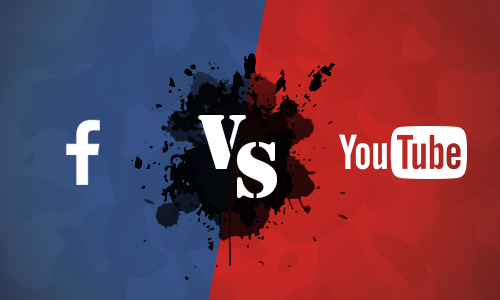The director of video at Facebook spoke of the challenges of the video format on the network during LeWeb14. The key points of her speech, and a little more…
YouTube was alone at the head of the online video market for many years, but today it is under attack from a heavyweight competitor : Facebook. According to the Médiametrie study of the French online video market, Facebook is the second largest player on the market with more than 300 million videos viewed per month, far behind Google (1.6 billion videos viewed per month) but far ahead of TF1, France Télévisions or M6.
One last figure, on the international level this time: Facebook records over one billion daily views of its videos.
To counter YouTube, boost video use and seduce the brands, Facebook has innovated by improving its products. In particular, the social network has imagined a format called “auto-play”.
A little reminder: what is auto-play? When a user browses his/her news feed, the videos start automatically, without the sound. The videos concerned are not only those of amateurs, but also of professionals (TV channel, media, etc.) and even advertisers (brand content).
Fidji Simo, director of the team in charge of video at Facebook recently spoke at LeWeb. This Frenchwoman presented Facebook’s recent interest in video and explained how the network distributes content via its algorithm, in function of the centres of interest of internet users and their use of the video format.
- The video of Fidji Simo’s presentation, Director of Product and Ads for News Feed at Facebook
Some notable extracts:
“Video format is the most engaging and the most immersive format to tell a story” ”We have designed this product to promote discovery. We believe that our DNA is to put content in front of people who never imagined watching it.”
“We realized that when the visitor has to click on play (as on other video platforms), this constitutes a barrier to the discovery of the content.”
“We have also improved our algorithm to give greater value to the videos. The more our users watch them, the higher they are ranked on their news feed and on that of their friends.” ”The videos on Facebook are not confined to ads. The social network is also interested in information, entertainment or even our holiday movies.”
“A successful video on Facebook proposes authentic content and content that is adapted for mobiles.”
“Concerning competition with YouTube, our two platforms are very different.”
- Two practical cases of brands using video on Facebook
Guerlain: The brand was the first in Europe to benefit from Facebook’s new video advertising format. For 24 hours, it streamed promotional clips for its new perfume ‘L’Homme Idéal’. Its purpose: to target male internet users between 18 and 34. Learn more about this campaign.
Perrier: The brand was also one of the first to test this new format with its “Inspired by StreetArt” campaign. Its goal: to reach a young target audience and acquire strong online visibility. In 24 hours, more than 6.7 million internet users (25% of 18 to 49 year-olds) were exposed to the video, and it was watched by 3.3 million of them for a cost of 4 euro cents per video view.
The brands have well understood the interest of video on Facebook: to disseminate information in video format more rapidly to an audience that is unequalled on the web. This format therefore represents a major challenge for Facebook in 2015, and also for other social networks… we are talking, of course, about its competitor, the proclaimed leader of social TV: Twitter.
Today, the brands that have a Facebook Page and stream videos can not monetize their audience directly, but the network makes a call-to-action possible at the end of the video. The goal: to transform the readers into visitors through, for example, a link towards a website.
Tomorrow and in the next few weeks: Facebook wants to continue to improve the user experience by tackling the recommendation of new videos, in the manner of Netflix, at the end of the visualisation. “What do you think of that idea?”
